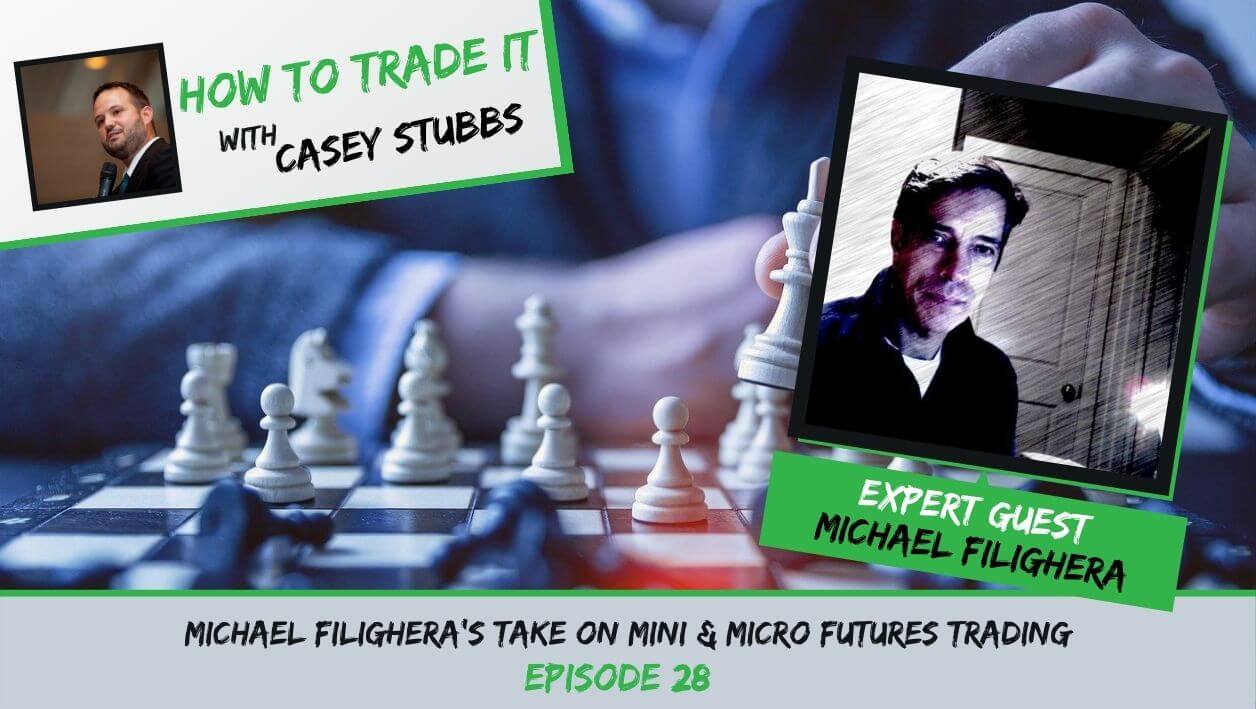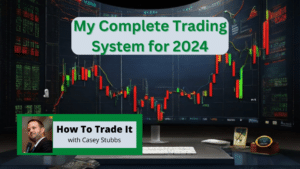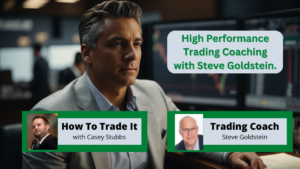Michael Filighera’s Take on Mini & Micro Futures Trading, Ep #28

Michael Filighera started trading on the Pacific Exchange in 1979. He has been a professional trader for 40+ years. His journey started when he was taking classes at the Chicago Conservatory of Music. During breaks in classes, he would walk to the Chicago Board of Trade and watch them trade. He was fascinated.
After he graduated he moved back to San Francisco, where a friend invited him to the Options Market-Maker trading floor for options trading tutorials. Michael was attracted to the energy he felt from the traders. When his friend asked him to become his clerk, he quickly pointed out that he only had experience with music. But his friend emphasized that music is the same. Music breaks down into numbers and trading is about the numbers. Michael became a trader and never looked back.
Listen to this episode of How To Trade It to hear his story, his trading strategy, and learn about his love for teaching.
@eyeofthestormsf shares his mini & micro futures trading strategies in this episode of How To Trade It! #stocks #Stock #trading #StockMarket #Investing #DayTrading #StockPicks #micro #mini #futures Click To Tweet
Subscribe to How To Trade It
[maxbutton id=”3″][maxbutton id=”4″][maxbutton id=”5″][maxbutton id=”6″]
You’ll Want To Hear This Episode If You Are Interested In…
- [0:26] Michael’s transition from music to trading
- [7:15] Why Michael loves working with beginners
- [10:39] What Michael trades and why
- [12:05] Michael’s recommendations for beginners
- [18:23] The importance of measurements
- [24:18] How to connect with Michael
Why Michael LOVES Working With Beginners
Michael notes that working with beginners can be so much easier than working with someone who has 30+ years of experience. Why? Because experienced traders struggle to give up the habits that no longer serve them. A beginner can absorb everything they learn. Michael can teach a beginner to learn to manage their risk properly, learn correct position-sizing, and account-sizing. He can help them learn to plan and set goals. Check out this options trading tutorial for beginners’ guide to learn more about managing your risk properly.
All of these factors need to be put into play every single day to be a successful trader.
Michael states, “I love teaching. I like helping other people who want to be successful in trading. Because there’s a psychological component. There’s a mathematical component. There’s an emotional component. There are all kinds of things. When you can put them all together and do it with strength, you’ve given yourself a huge boost.”
@eyeofthestormsf went from musician to futures trader. What did his journey look like? What drew him to trading? Find out in this episode of How To Trade It! #stocks #Stock #trading #StockMarket #Investing #DayTrading #StockPicks #micro #mini… Click To Tweet
Michael’s Futures Trading Recommendations for Beginners
Michael’s primary market is the NASDAQ 100. His secondary markets are the S&P 500, gold, and crude oil. Where does he think a beginner futures trader should start? Michael explains that the SPX (future) is $25 per tick. There are 4 ticks to a $1 move. To move $1, it’s $100 on one contract. So your risk exposure is quite high. You’ll need at least $25,000–$50,000 to trade a contract that large.
Michael points out that the ES Mini is $12.50 per tick. So it’s $50 per point and you still have margin requirements. Then there are micro-contracts. This is what he recommends for beginners. If you’re trying to learn about position-sizing, about risk-management, about all the different things you need to know, it’s $1.25 a tick—which doesn’t seem like a lot. But Michael has seen the S&P 500 move $6 in less than 30 seconds.
The NASDAQ mini—which Michael likes to trade—is $5 a tick, 4 ticks to a dollar. So one dollar move is $20 for one contract. It can move $10–$30 in one swing. The micro-contract is 50 cents a tick. It’s much easier to build good habits trading a micro before you attempt a mini.
What is a sufficient account size to start trading? What does Michael recommend learning about the index you trade? Keep listening to hear his thoughts!
The Importance of Measurements
Michael measures momentum with a daily, hourly, a 15-minute, and 5-minute chart. He’ll then look down to 1,000, 500, and 400 tick charts for moves that are happening quickly. He uses Elliott Wave and Fibonacci to track patterns and believes they’re applicable to any chart. The patterns are the same and will build into all of the charts. A 400-tick chart can change every 400 ticks.
Michael points out that trading is now computer-controlled and computer-generated. The computer reacts to the algorithm it was coded with. He also believes that you must have a way to measure volume. You need to question: Are they aggressively selling? Aggressively buying? It can help you determine the order flow. Order flow helps you determine movements to the upside or downside. You have to understand what will turn a market and what won’t. You need to have a complete picture when you walk into your trading day strategies.
Listen to the whole episode to hear all of Michael’s thoughts on futures trading!
Why are measurements so important in futures trading? @eyeofthestormsf shares WHY in this episode of How To Trade It! #stocks #Stock #trading #StockMarket #Investing #DayTrading #StockPicks #micro #mini #futures Click To Tweet
Resources & People Mentioned
Connect with Michael Filighera
- Logical Signals
- Connect on LinkedIn
- Follow on Twitter
Connect With Casey Stubbs
- Website: https://caseystubbs.com
- Subscribe! https://www.youtube.com/caseystubbs
- Twitter: https://www.twitter.com/caseystubbs
- Facebook: https://www.facebook.com/caseystubbs
- LinkedIn: https://www.linkedin.com/in/caseystubbs/
- Newsletter: https://tradingstrategyguides.ewebinar.com/webinar/live-workshop-learn-the-simple-baseline-strategy-13152
Subscribe to How To Trade It
[cp_popup display=”inline” style_id=”60267″ step_id = “1”][/cp_popup]






